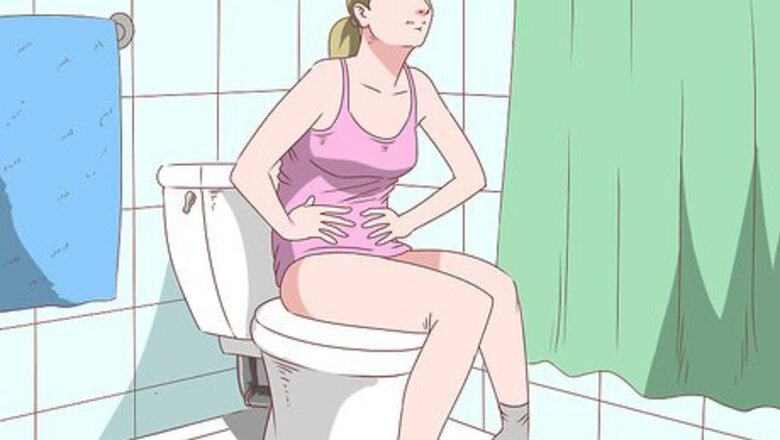
views
Identifying Hemorrhoids
Look for swollen veins. Everyone has clumps of veins in and around the anus and lower rectum. When these veins swell or bulge with pressure, they’re called hemorrhoids. You can get hemorrhoids inside or outside the anus and, while unpleasant, they’re usually not serious. Pain and itching are the most common symptoms. In addition, you might feel pain in the area while walking or sitting.
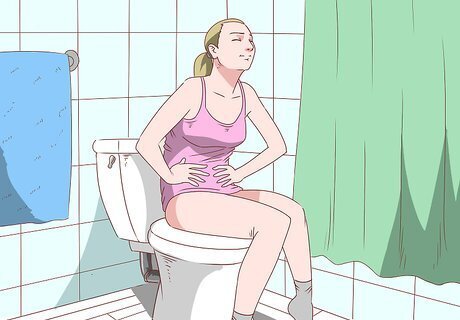
Notice whether it hurts to have a bowel movement. Hemorrhoids are often particularly painful during a bowel movement, when pressure in bearing down is placed upon the anal and rectal area. In addition to feeling pain, many report feeling the uncomfortable sensation of needing to have another bowel movement right away, even though the bowels have been vacated.
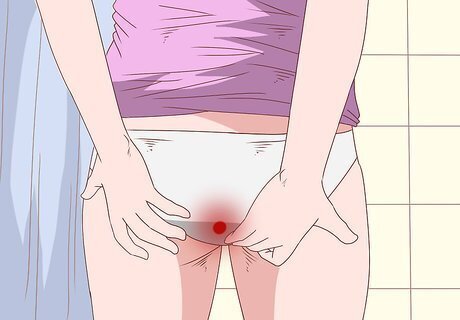
Look for blood. One of the most common signs of hemorrhoids is painless bleeding, usually when you go to the bathroom. You might see a bit of blood on the toilet paper or in the bowl. Your bottom may also itch, hurt, or have small bulges around the anus. Hemorrhoids aren’t the only possible reason for these symptoms, though. See your doctor to rule out other problems.
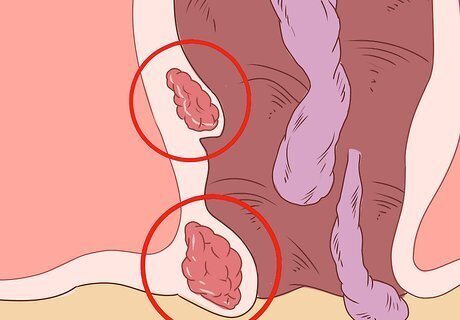
Notice lumps. Small bulges around the anus that look like grapes may be an indication of hemorrhoids. These can be various sizes. Usually, they’re the color of surrounding. But if the lumps are black or dark red/purplish, you need to go to the doctor immediately as it is a sign of a thrombosed hemorrhoid – which needs to be treated by a doctor.

Check for swelling. External hemorrhoids cause the anal area to swell and become tender. There are medications that can reduce swelling, though, including over-the-counter meds called vasoconstrictors that will shrink hemorrhoids. You can also try non-prescription creams and wipes – or even a small ice pack – to ease pain and swelling. Soak in a bathtub filled with a few inches of warm water 2-3 times a day or use a special "sitz bath" pan that fits onto your toilet seat. Then, pat dry gently.
Knowing if You're at Risk
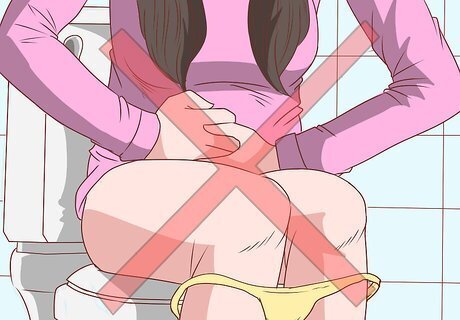
Assess your bathroom habits. The biggest cause of hemorrhoids is straining during a bowel movement. It puts pressure on the veins in the rectum and anus, causing them to swell and become painful and irritated. If you have infrequent bowel movements or have difficult during bowel movements, you may be more likely to strain. Think about your bathroom habits and determine whether they put you at risk for getting hemorrhoids. Straining can cause an internal hemorrhoid to pass through the anus, a condition known as a protruding or prolapsed hemorrhoid. This can be a medical emergency if the hemorrhoid doesn’t shrink or return to normal with the application of hemorrhoid ointment.
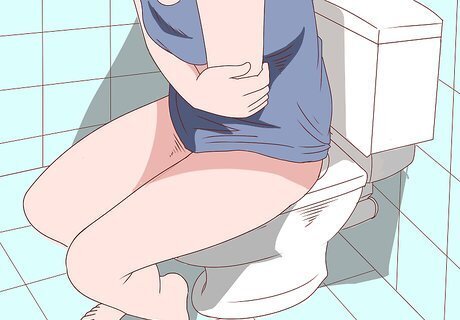
Determine if you have constipation. Constipation leads to the feeling of being "backed up," which causes people to strain during bowel movements. If you have trouble staying regular, you may be straining during bowel movements in an effort to move things through your system faster.
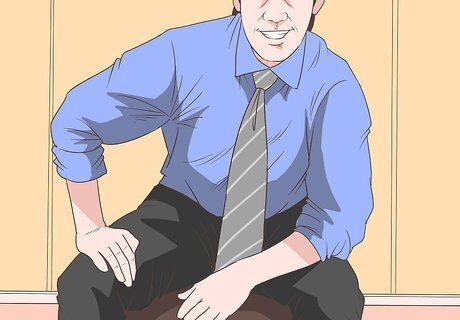
See if you sit for long periods of time. Sitting all day long puts pressure on the anal area, which can eventually lead to hemorrhoids. People who drive for many hours, work at desks in offices or who are unable to move around for other reasons are particularly at risk. Assess your daily habits to determine if sitting too much may be the problem.
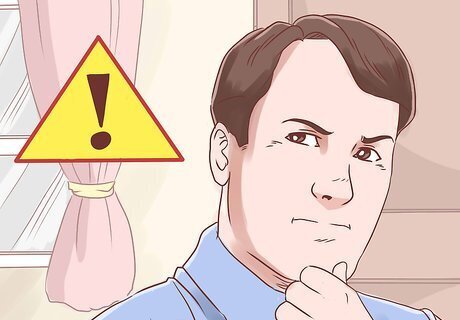
Be aware of other conditions that can cause hemorrhoids. Hemorrhoids can be a result of other conditions that irritate the anal and rectal area. An anal infection, for example, can affect the surrounding tissue such that hemorrhoids are formed.
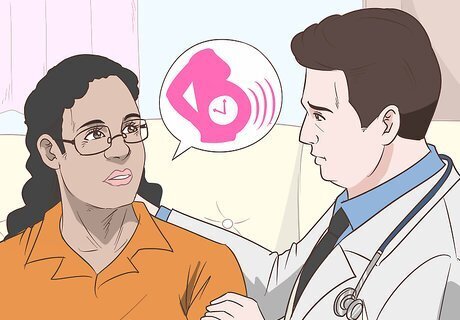
Be aware that pregnancy can cause hemorrhoid symptoms. The extra weight, pressure against internal organs, a change in diet, and the process of childbirth itself can also cause hemorrhoids. Talk to your doctor or OB-GYN if you are having a problem.
Treating Hemorrhoids

Try witch hazel. It has astringent properties that can help to ease the swelling and irritation. Dab a cotton ball in witch hazel and rub it over the affected area. Let it dry for a few moments. If you don't want to use pure witch hazel, you can instead buy a cream containing witch hazel.
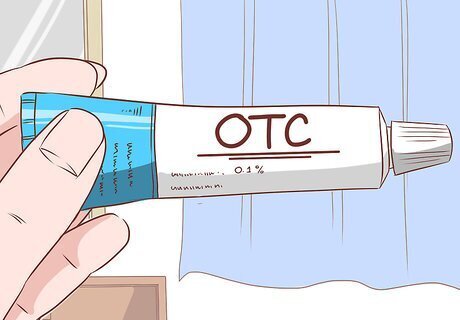
Try an over-the-counter pain cream. There are several over-the-counter creams that are quite effective in treating hemorrhoids - so much so that in many cases, people who use them don't end up needing to see a doctor. Look for the following types of creams in the drugstore: Corticosteroid creams, which can reduce the itching and swelling. Creams containing lidocaine can also help reduce the pain. Vasoconstrictor ointments, creams, and suppositories.
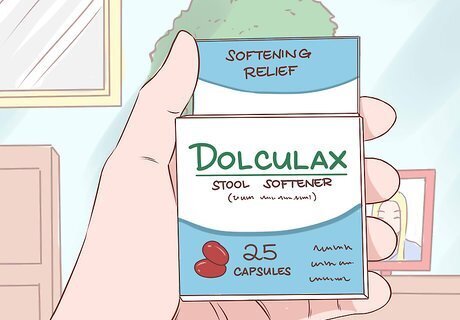
Use a stool softener. Since having bowel movements can be very painful when hemorrhoids are present, many find that using a stool softener is helpful. It allows you to have a bowel movement without putting extra pressure on the anal and rectal area. Using a stool softener may also help counteract a tendency to strain too much while on the toilet.
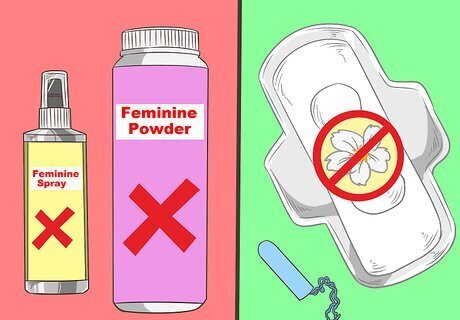
Avoid perfumed toilet tissue and other irritants. Perfumes, dyes, rough toilet paper, and other irritants can make hemorrhoids feel a lot worse. Use soft, white toilet paper - or even cotton balls, if you're especially sensitive. You might also find it irritating to wear tight pants or stockings.
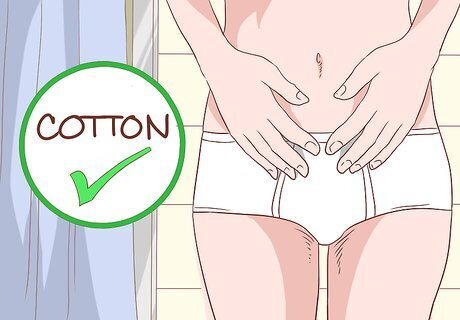
Wear loose cotton underwear. Soft cotton underwear allows air to flow in and out of the area, which can keep the hemorrhoids from getting more irritated and painful. Wearing underwear made of a synthetic fabric can keep moisture trapped against the body. It should go without saying that wearing tight underwear and thongs will be uncomfortable and irritating when you have hemorrhoids.
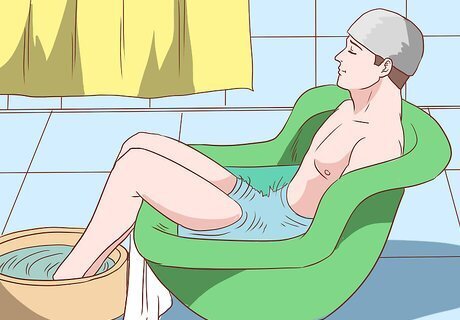
Try a sitz bath. This bathing method can ease pain and discomfort while you have hemorrhoids. Fill the tub with warm water (not hot) and sit in it for about 15 minutes. Don't add soap or bubble bath, as they might further irritate the hemorrhoids. You can add witch hazel to make the bath even more restorative.
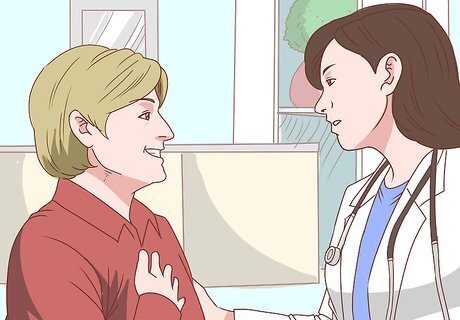
Seek medical attention if necessary. If your hemorrhoid symptoms don't seem to be affected by your home treatments, and if they don't go away after a week or so, you should see a doctor to determine whether you need medical treatment to take care of the problem. In most cases hemorrhoids are curable at home, but if yours are persistent, there's no need to keep yourself uncomfortable for too long. As well, the fact that the hemorrhoids aren't going away may be an indication of a deeper problem, such as bleeding coming from someplace other than the tip of the rectum or anus. Heat treatments and surgery are commonly used to treat severe hemorrhoids.
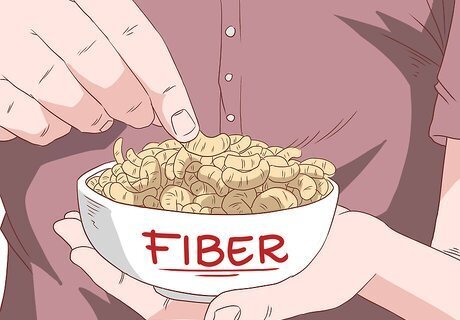
Change your diet. Bump up your fiber intake. Fiber softens stools and makes them move through your body more easily. You'll find fiber in things like beans, whole-grain breads and cereals, and fresh fruits and veggies. You may also want to try a supplement if you can't get enough from foods. Add fiber slowly to help avoid gas and bloating.
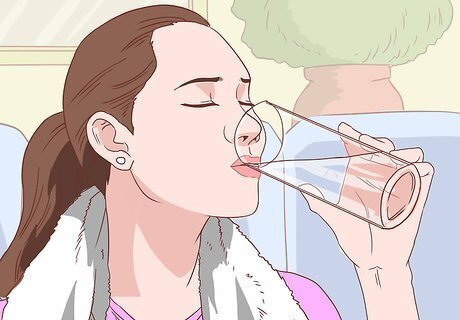
Drink lots of fluids. Stay well hydrated to keep stools soft, so that they're easier to pass. Water is the best choice. Drink plenty of water and fluids throughout the day. Prune juice is also a natural laxative and can help you go.
Exercise regularly. Try to get in daily exercise to keep things moving, too. Even brisk walking 20-30 minutes every day can help keep you from getting stopped up.



















Comments
0 comment